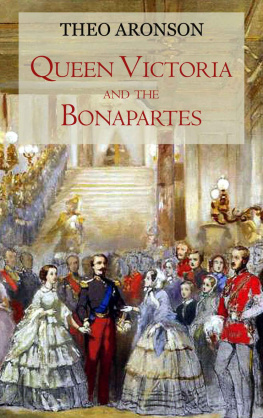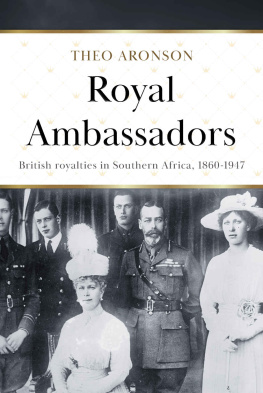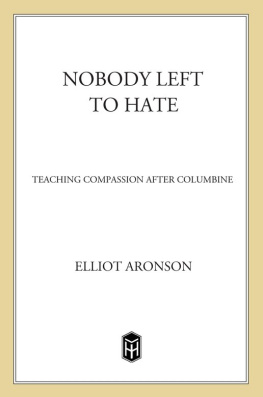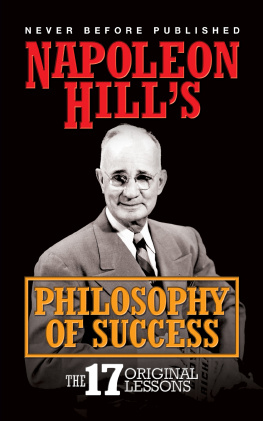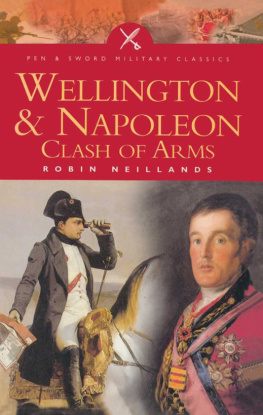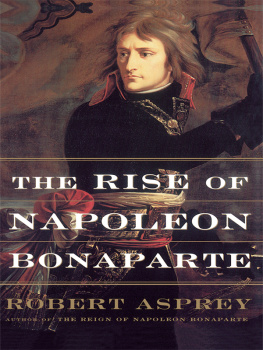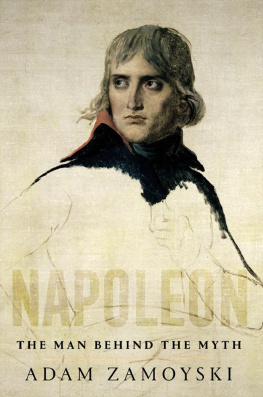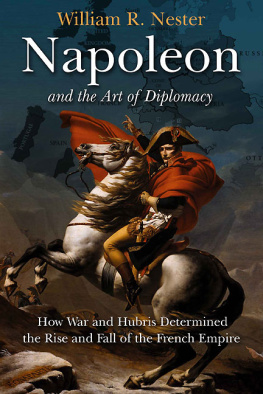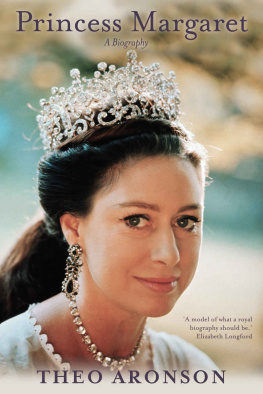Aronson - The Fall of the Third Napoleon
Here you can read online Aronson - The Fall of the Third Napoleon full text of the book (entire story) in english for free. Download pdf and epub, get meaning, cover and reviews about this ebook. year: 2020, publisher: Lume Books, genre: Detective and thriller. Description of the work, (preface) as well as reviews are available. Best literature library LitArk.com created for fans of good reading and offers a wide selection of genres:
Romance novel
Science fiction
Adventure
Detective
Science
History
Home and family
Prose
Art
Politics
Computer
Non-fiction
Religion
Business
Children
Humor
Choose a favorite category and find really read worthwhile books. Enjoy immersion in the world of imagination, feel the emotions of the characters or learn something new for yourself, make an fascinating discovery.

- Book:The Fall of the Third Napoleon
- Author:
- Publisher:Lume Books
- Genre:
- Year:2020
- Rating:5 / 5
- Favourites:Add to favourites
- Your mark:
- 100
- 1
- 2
- 3
- 4
- 5
The Fall of the Third Napoleon: summary, description and annotation
We offer to read an annotation, description, summary or preface (depends on what the author of the book "The Fall of the Third Napoleon" wrote himself). If you haven't found the necessary information about the book — write in the comments, we will try to find it.
The Fall of the Third Napoleon — read online for free the complete book (whole text) full work
Below is the text of the book, divided by pages. System saving the place of the last page read, allows you to conveniently read the book "The Fall of the Third Napoleon" online for free, without having to search again every time where you left off. Put a bookmark, and you can go to the page where you finished reading at any time.
Font size:
Interval:
Bookmark:
THE FALL OF THE THIRD NAPOLEON
Theo Aronson
First published by Cassell & Company Ltd. in 1970
Copyright The Estate of Theo Aronson 1970
This edition published in 2020 by Lume Books
30 Great Guildford Street,
Borough, SE1 0HS
The right of Theo Aronson to be identified as the author of this work has been asserted by them in accordance with the Copyright, Design and Patents Act, 1988.
All rights reserved. No part of this publication may be reproduced, stored in a retrieval system, or transmitted in photocopying, recording or otherwise, without the prior permission of the copyright owner.
For Dudley Frasier
Table of Contents
It is all very beautifulfor the moment,
but I would not give two sous for the last act!
Alfred de Musset,
at a ball at the Tuileries
during the Second Empire
AUTHORS NOTE
The year 1970 marks the centenary of one of the great watersheds in the history of the worldthe outbreak of the FrancoPrussian War and the resulting fall of the French Second Empire. For centuries, until the dbcle of 1870, France had been mistress of Europe, and Paris the capital of the civilized world. Then suddenly, in a matter of weeks, culminating in the Prussian victory over the Emperor Napoleon III at Sedan, Germany became the dominant country on the Continent, and the centre of European gravity swung from Paris to Berlin. For the following three-quarters of a century, Germany held the centre of the European stage. It took the two greatest wars that mankind has ever known and a combination of almost every major power in the world to oust her from this position.
I have always been fascinated by this dramatic turning-point. As long as fifteen years ago, as a student, I put a pack on my back and walked the road which the luckless Napoleon III had followed during the war of 1870. In that same month of August, I tramped from Saarbrckenscene of the first ephemeral French victory, to Sedanscene of the final ignominious defeat. However, I have not set out to write a military history; this book does not pretend to be a study of the FrancoPrussian war. Nor have I attempted a detailed political analysis of the Empire in its final, liberal stage. This is an account of events during the last days of the French Second Empire and, more particularly, of the fall from power of those two most controversial of nineteenth-century charactersthe Emperor Napoleon III and the Empress Eugenie. As much as anything, this is the story of their personal fortunes during those six terrible weeks.
I have received a great deal of help during the writing of this book but my chief debt is to Mr Brian Roberts. Without his practical encouragement, it would have never been written. I am indebted for information, material and advice to M. Louis-Napoleon Bonaparte-Wyse; Dr Anna Benna of the Haus-Hof-und Staatsarchiv, Vienna; M. Pierre Blanchard; Miss Y. dOrleans; Mr Alfred Vital and Mr Brocas Harris. I owe thanks to those many people who have given me assistance during my visits to the battlefields of 1870. I am grateful for all the help that I have received from the Bibliothque Nationale, Paris; the Library of Congress, Washington; the British Museum, London; and the many libraries and newspaper libraries in London and Paris. Three recently published books which have proved invaluable are The FrancoPrussian War by Michael Howard, The Empress Eugenie by Harold Kurtz, and The Fall of Paris by Alistair Horne. I should like also to thank the publishers of the following books for permission to quote copyright material: Hutchinson, The Tragic Empress , Marie de Garnier, Comtesse Des Garets (Skeffington, 1929); and Emperor Fredericks War Diaries (Stanley Paul, 1927). Empress Fredericks Letters , edited by Ponsonby (Macmillan, 1928). The Letters of Queen Victoria , 2nd series, edited by George Earle Buckle (John Murray, 1926).
1969
prologue
Imperial Paris
1870
The Emperor Napoleon III, in his efforts to revive the splendours of the reign of his uncle, the Great Napoleon, achieved at least one spectacular success: he transformed Paris into the most magnificent city in Europe. Of all the capitals on the Continent, none was more beautiful, more sophisticated, more cosmopolitan or more animated than Paris during the French Second Empire. It was truly la ville lumire , the Queen of Cities, the undisputed centre of the civilized world.
From the very start of his reign, in 1852, Napoleon III had turned his attention to the matter of aggrandizing his capital. The crowded medieval city was to become an imperial metropolis; Paris, decreed the new Emperor, must be the most beautiful city in the world. To this end he had appointed the energetic Georges Haussmann as prfet of the Seine department and, for the following sixteen years, the so-called Haussmannization of Paris had been carried out with ruthless dedication. Wide boulevards were cut through the slums, whole areas of decaying houses cleared away and existing monuments stripped of surrounding clutter that they might be seen to better advantage. Palaces were enlarged, parks landscaped and new quartiers proclaimed. The city was embellished with trees, fountains, bridges, statuary, squares and thousands upon thousands of new buildings. The great glass domes of newly built theatres, emporiums, hotels and railway stations rose glittering into the sky. By 1870 Paris was a city of elegant thoroughfares, long vistas and triumphal arches; it was the matchless city one knows today. It became the model, not only for the other cities of France, but for capitals throughout the world. Rome, Madrid, Brussels, Stockholm and Mexico City owe their nineteenth-century refashioning to the example of Napoleon IIIs Paris.
No city has ever formed a more appropriate setting for the life of its period. The new Paris matched the mood of the Second Empire exactly. For one thing it made the ideal background for the parades and processions which were such a feature of the re-established Napoleonic rgime. Few days passed without some swaggering cavalcade. One might see the Emperors carriage, escorted by flamboyantly uniformed Cent Gardes , returning to the Palace of the Tuileries. Or the beautiful Empress Eugenie, with her piqueurs in green and gold and her postilions in powdered wigs, might be driving to the Chteau of Saint-Cloud. The young Prince Imperial, attended by a troop of white-robed Algerian horsemen, might be setting out for his daily drive to the Bagatelle. And there were less august processions than these. Helmets flashing, plumes fluttering, swords thudding and accoutrements all a-jingle, a detachment of cavalry might suddenly emerge through some archway to go jogging down the broad, chestnut-lined avenues towards the Champ de Mars. There seemed to be bands and banners or military displays almost every day wrote one enraptured visitor, congresses of Orphonistes with gorgeous lyres on their standards, or of Pompiers with magnificent brass helmets religious processions with choirs and hundreds of little girls in blue sashes, and statues of the Virgin Mary, or other saints, borne aloft.
On certain afternoons the crowds thronging the Champs Elyses and the Avenue de lImpratrice would be diverted by the sight of an altogether more worldly cavalcade as a line of carriages bearing the haut-monde , and the demi-monde , made its way towards the Bois de Boulogne. They were headed for the fashionable drive around the Lac Infrieurthe larger of the two lakes in the newly laid-out park. A seemingly endless procession of coups, victorias, phaetons, landaus, calches, daumonts and barouches would go bowling along under the trees, their occupants ranging from the hat-tipping Emperor himself to the latest and most skittish demi-mondaine . In fact, it was the demi-monde that stole this particular show. In their brilliantly coloured, satin-upholstered carriages, their extravagant clothes, their flashing jewellery and their dyed hair, they paraded themselveshaughtily or provocativelybefore the astonished eyes of foreign sightseers. Indeed, in such profusion did the courtesans of the Second Empire crowd the drive around the Lac Infrieur that they became known as the Ladies of the Lake. To one onlooker, remembering, in his old age, that line of gleaming carriages stretching all the way from the Place Grande-Cascade in the Bois to the Place de la Concorde in front of the Tuileriesall flooded with purple light by the setting sunit seemed like a fairytale.
Next pageFont size:
Interval:
Bookmark:
Similar books «The Fall of the Third Napoleon»
Look at similar books to The Fall of the Third Napoleon. We have selected literature similar in name and meaning in the hope of providing readers with more options to find new, interesting, not yet read works.
Discussion, reviews of the book The Fall of the Third Napoleon and just readers' own opinions. Leave your comments, write what you think about the work, its meaning or the main characters. Specify what exactly you liked and what you didn't like, and why you think so.

